Saint Andrew the Apostle (Greek: ‘Ανδρέας, Andreas; early first century—mid to late first century AD), called in the Orthodox tradition Protokletos, or the First-called, is the brother of Peter the Apostle. The name “Andrew” (from Greek : “ανδρεία”, Andreia, manhood, or valour), like other Greek names, appears to have been common among the Jews from the second or third century BC. No Hebrew or Aramaic name is recorded for him.
For November 30th, 2008, the feast of St. Andrew the First-called Apostle, Fr. Michael Varlamos reads the life of the saint in lieu of the sermon at the Assumption Greek Orthodox Church in St. Clair Shores, MI.
The New Testament records that Andrew was the brother of Simon Peter, by which it is inferred that he was likewise a son of Jonah, or John.[Mt. 16:17] [Jn. 1:42] He was born in Bethsaida on the Sea of Galilee.[Jn. 1:44] Both he and his brother Peter were fishermen by trade, hence the tradition that Jesus called them to be his disciples by saying that He will make them “fishers of men” (Greek: ἁλιείς ἀνθρώπων, halieis anthropon). At the beginning of Jesus’ public life they occupied the same house at Capernaum.[Mk. 1:21-29]
The Gospel of John teaches that Andrew was a disciple of John the Baptist, whose testimony first led him and John the Evangelist to follow Jesus.[Jn. 1:35-40] Andrew at once recognized Jesus as the Messiah, and hastened to introduce him to his brother.[Jn. 1:41] Thenceforth, the two brothers were disciples of Christ. On a subsequent occasion, prior to the final call to the apostolate, they were called to a closer companionship, and then they left all things to follow Jesus.
.jpg)
The new church of St. Andrew
The new church in the city of Patras, in a Byzantine style, was founded in 1908 by King George the I, and it was consecrated in 1974 by Metropolitan – Bishop Nicodemus. The Church of St. Andrew of Patras is the largest church in the Balkans, and it can fit inside a total of 5,500 faithful.
.jpg)
The old church of Patras
Right on the spot where St. Andrew was martyred – the old city of Patras, a new basilica was built over the ruins of a former Byzantine basilica (erected over the ruins of an ancient Greek temple) destroyed by the Turks.
.jpg)
In the gospel Andrew is referred to as being present on some important occasions as one of the disciples more closely attached to Jesus.
Eusebius quotes Origen as saying Andrew preached in Asia Minor and in Scythia, along the Black Sea as far as the Volga and Kiev. Hence he became a patron saint of Ukraine, Romania and Russia. According to tradition, he founded the See of Byzantium (Constantinople) in AD 38, installing Stachys as bishop. His presence in Byzantium is also mentioned in the apocryphal Acts of Andrew written sometime during the second century. This diocese would later develop into the Patriarchate of Constantinople. Andrew is recognized as its patron saint.

Images from inside the Monastery of St Andrew, Romania

The cave of St Andrew, Romania

The Kievan hill where St. Andrew is said to have erected the cross is commemorated by the cathedral dedicated in his name
Andrew is said to have been martyred by crucifixion at Patras (Patrae) in Achaea. Though early texts, such as the Acts of Andrew known to Gregory of Tours, describe Andrew bound, not nailed, to a Latin cross of the kind on which Christ was crucified, a tradition grew up that Andrew had been crucified on a cross of the form called Crux decussata (X-shaped cross) and commonly known as “Saint Andrew’s Cross”; this was performed at his own request, as he deemed himself unworthy to be crucified on the same type of cross on which Christ was crucified.
Remaints of the cross St. Andrew was crucified on, Patras – Greece
The precious head of St. Andrew, Patras – Greece
Andrew is the patron saint of Patras. According to tradition his relics were moved from Patras to Constantinople. Local legends say that the relics were sold to the Romans. The head of Andrew, considered one of the treasures of St Peter’s Basilica, was given by the Byzantine despot Thomas Palaeologus to Pope Pius II in 1461. In recent years, by decision of Pope Paul VI in 1964, the relics that were kept in the Vatican City, were sent back home to Patras, where they belong. The relics, which consist of the small finger, part of the top of the cranium of Andrew and small parts of the cross, have since that time been kept in the Church of St Andrew at Patras in a special shrine, and are revered in a special ceremony every November 30.
Photos from inside of the Church of St Andrew, Patras – Greece
.jpg)
.jpg)
The relics of the Saint in the Church of St Andrew, Patras, Greece



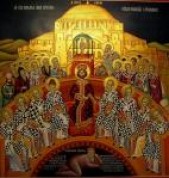 Christian Dogma
Christian Dogma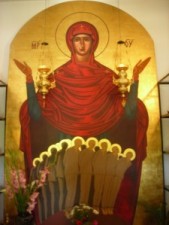 Christian Martyrs
Christian Martyrs Christian Orthodox Churches and Monasteries
Christian Orthodox Churches and Monasteries Christian Sermons and News
Christian Sermons and News Church's Teachings on Fasting
Church's Teachings on Fasting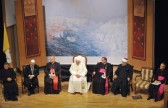 Ecumenism – a Great Heresy
Ecumenism – a Great Heresy Father George Calciu
Father George Calciu Life_a Sacred Gift form God
Life_a Sacred Gift form God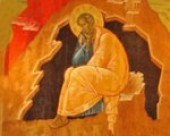 Orthodox Saints and Church Fathers
Orthodox Saints and Church Fathers Spiritual Elders
Spiritual Elders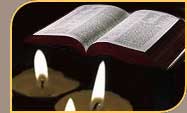 Daily Bible Readings
Daily Bible Readings Journey to Orthodoxy
Journey to Orthodoxy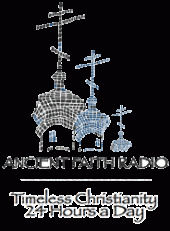 Listen to Ancient Faith Radio
Listen to Ancient Faith Radio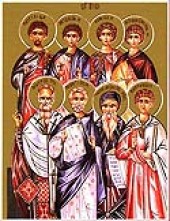 Orthodox Calendar of Feasts and Saints
Orthodox Calendar of Feasts and Saints Orthodox Christian Mission Center
Orthodox Christian Mission Center Orthodox Institute
Orthodox Institute OrthodoxChristianNetwork TV
OrthodoxChristianNetwork TV
4 comments
Comments feed for this article
December 20, 2009 at 5:33 PM
St. Andrew the First-called Apostle « OrthodoxWord Map university
[…] the original post: St. Andrew the First-called Apostle « OrthodoxWord By admin | category: PATRAS | tags: bishop, bones, city, george, largest, metropolitan, […]
March 23, 2011 at 2:34 PM
benjamin garza
I am curious if St Andrew was he married and if there any books written by him. My name is Andrew
July 15, 2011 at 11:05 PM
Andreas
It is interesting to know that. Hopefully, somebody may answer it. Also, the monks at Saint Gregory Palamas are called (surnamed) Agiogregorites, how do the monks at monasteries dedicated to St. Andrew are called (surnamed).
July 23, 2011 at 11:37 AM
orthodoxword
Dear Andreas
I do not know this.